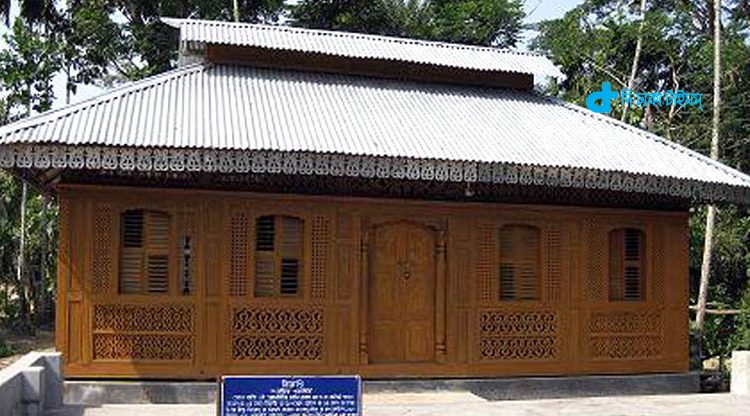The Dhaka Times Desk good morning Friday, January 3, 2020 AD, 20 Paush 1426 BENGABD, 6 Jamadiul Awal 1441 Hijri. Good morning everyone from The Dhaka Times. Happy birthday to all those whose birthday is today - happy birthday.

The picture you are looking at is Momin Masjid in Burirchar village of Mathbaria in Pirojpur district. Although this mosque looks new, it is a historical mosque.
In 1913, Momin Uddin Akon of Burirchar village of Mathbaria started construction of this mosque in his house. 21 craftsmen completed the construction of this mosque in 7 years.
It is known that in 2003, the Department of Archeology of the Government of Bangladesh declared it a protected antiquities and took responsibility for its maintenance. The mosque was renovated in 2008. During this time several changes were made to the original design including the use of iron. Note that such a wooden mosque once existed in Kashmir, India; However, when it was destroyed in the earthquake of 1885, it is known that Momin Mosque in Mathbaria became the only such monument.
As it is difficult to go to a distant mosque to pray, young Momin Uddin Akon thought of building a mosque in his own house. On this occasion, he visited various mosques and gained an understanding of their design and calligraphy.
Generally speaking, most of the mosques in Bangladesh are made of brick or stone. Most of them were built during the Mughal period. Following this, Momin Uddin Akon himself started building the mosque by making bricks in the brick kiln. A few days later he decided to build the mosque entirely out of wood. Most of the houses in that village were made of wood.
Apart from this the village was full of various woods and fruit trees. That is why he planned to design the mosque with different types of leaves, flowers and fruits like pineapples. Various natural colors are used in these designs on rare ironwood and Burma teak wood.
It is known that the young Momin Uddin Akon has used his knowledge of Arabic language, Islamic culture and calligraphy in this regard. He himself lived in a simple house in the village and was used to a simple life. He recruited 21 artisans from Swarupkathi in the then Barisal district and wood from Chittagong and Burma. The entire planning, design and calligraphy work of the mosque was done under the supervision of Momin Uddin Akan. A calligraphy design is also placed on the entrance of the mosque and one on the mehrab.
During the last two decades of the last century, due to rainwater and lack of proper maintenance, the workmanship and paint of the mosque started to deteriorate. During this time Mohammad Shahidullah, the grandson of Momin Akan, started writing about the archaeological value of the mosque and the need for maintenance in various newspapers and magazines. During this time he also wrote a book called 'Momin Masjid: Smriti Bismriti Khata'. That's why in 2003, the Archeology Department of the government declared it a protected antiquities.


